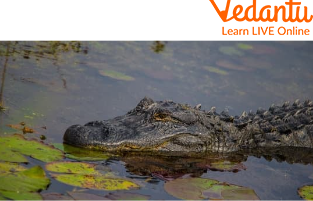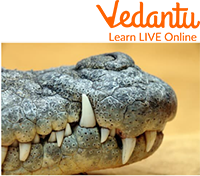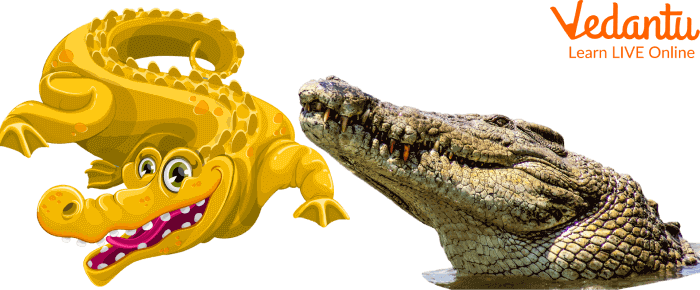




Overview of Crocodile and Alligators
Crocodiles and alligators are both members of the same reptile family, known as the crocodilian family. They are often confused for each other, but there are some key differences that set them apart. Crocodiles are typically found in tropical regions such as Africa, Australia, and Asia. On the other hand, alligators are native to the southeastern United States and China. They can be found in freshwater habitats such as swamps, marshes, and rivers, but crocodiles can also be found in saltwater habitats such as estuaries and coastal mangrove swamps.
In this article, we are going to learn some interesting crocodile habitat facts as well as about their behaviour and lifestyle. So, let’s dive in!
Alligators and Crocodiles: What are They and Where Can You Find Them?
Any of the 23 species of typically big, heavy, amphibious creatures with lizard-like appearances and predatory habits that belong to the reptile order Crocodylia are referred to as crocodiles (order Crocodylia, or Crocodilia). Crocodiles have small legs, hooked webbed toes, strong jaws, and numerous conical teeth. They both have a distinctive body shape that enables the animal's eyes, ears, and nose to be seen above the water's surface while the rest is submerged. The skin is tough and plated, and the tail is lengthy and huge.
Crocodiles are most commonly found in the Northern and Southern hemispheres' lowland, wet tropics. The majority of Sub - Sahara Africa, India, Burma, Sri Lanka, South Asia, The Indies, North Australia, México and Central and South America, The West Indies, and Northern Latin America are home to the "real crocodiles'' (family Crocodylidae).
What Do Crocodiles Eat?
Given their big and strong jaws, crocodiles are known to be carnivores. Because they can survive in both freshwater and saltwater, these aquatic reptiles have unusual dietary sources.
What, then, do crocodiles eat?
Tiny mammals, birds, fish, bugs, frogs, other types of reptiles, and crabs are all consumed by crocodiles.
Behaviour and Lifestyle of Crocodiles
Crocodiles are regarded to have more advanced social, behavioural, and physical development than other reptiles. They are the only reptiles that can make loud noises and are more adept at learning new things than other reptiles.
Crocodiles are solitary creatures and are most active during the day.
They are apex predators and will eat a wide variety of prey, including fish, birds, mammals, and even other reptiles.
Crocodiles are ambush predators who wait patiently for prey to come close before striking.
They are also opportunistic feeders and will eat carrion if available.
They are good swimmers and can hold their breath for a long time while hunting.

Saltwater crocodile
Difference Between Crocodiles and Alligators
Following are the differences between the crocodile and alligators:
Interesting Facts About Crocodiles
Some of the interesting facts about crocodiles are as listed below:
Since crocodiles are carnivores, they typically only consume flesh. A recent study showed they also like the uncommon taste of fruit.
Over the course of their lifetime, crocodiles can lose 4,000 teeth.
A crocodile has the largest range of any animal in the world, with jaws that can exert 5,000 pounds of force per square inch.
The weak jaw-extending muscle of crocodiles can be closed with merely a rubber band or your bare fists.
Because the top and lower jaws of a crocodile are the same width, all of its teeth are visible when it closes its mouth, making it easier to distinguish it from an alligator.

Crocodile Teeth
The snout form of an alligator is another significant distinction. Crocodile snouts are much more pointed and V-shaped, while alligator snouts are wider and U-shaped.
A National Geographic crew in the Philippines' Agusan del Sur Province grabbed the longest crocodile alive, measuring 6.17 m (20.2 ft) long and weighing 1,075 kg (2,370 lb).
Crocodiles are dry creatures. They open their mouths, a technique known as "mouth gaping," which is quite similar to panting, to stay cool.
In the water, crocodiles can swim at speeds of up to 35 kilometres an hour (22 mph).
The idea that crocodiles could run quickly on land is a frequent one. They can "belly run" for brief distances up to 17 km/h (11 mph).
Summary
In the above article, we learned about the closest surviving relative of birds, that is, crocodiles are a live link to the dinosaur-like animals of ancient periods. Also, numerous crocodilian fossils from the Late Triassic Epoch, 200 million years ago, have been found. There may have been three major radiations, according to fossil data.
Another interesting fact we discussed is only one of four crocodile suborders has persisted up to the present. The largest, as well as the heaviest, reptiles that are living are crocodiles. The comparatively long crocodiles' snout, or nose, varies greatly in size and proportion. We hope you enjoyed reading this article, in case of any other doubts, feel free to ask in the comments.
FAQs on Alligators and Crocodile Habitat Facts
1. What is the crocodile's tooth count?
Crocodiles can have around 60 teeth at any given time, which is twice as many as we do. A crocodile can also have over 2,000 teeth in its lifetime, and like sharks, they also lose teeth pretty frequently.
2. What was the name of the original crocodile?
The name "crocodile" derives from the Old Greek word "lizard" (krokódilos).
3. What crocodile is the biggest?
Saltwater crocodile
The tidal or saltwater crocodile, the biggest species of crocodilian in the world, is found all through tropical regions of Asia and the Pacific, including the northern coast of Australia.






















